Table of Contents:
Linux Mint 22
-
Available software
-
Creativity & Inventing
-
Daily Use Purposes
-
Stability & Bugs
-
Customizability
Summary
Linux Mint 22 comes with many updated software and a few additional features. It will be supported with updates until 2029. The distribution also comes with experimental Wayland support for the Cinnamon session which has not yet matured enough, but the Xorg-based session is already more than enough. With updated eyecandy, more secure software management and an overall improvement of system core, the Linux Mint 22 is a considerable upgrade from older versions and a definite one from Windows 11 or macOS.
Pros
– Updated software and kernel.
– More secure software management.
– Better eyecandy and customization support.
– GTK4 port for themes.
– Matrix support via Element.
– Good hardware support including NVIDIA GPUs and other modern pieces.
– Experimental Wayland support.
Cons
– Buggy “Online Accounts” feature.
– Wayland session is not ready yet for daily use.
Linux Mint 22 was just released yesterday with some interesting changes and new features. The distribution is based on Ubuntu 24.04 LTS, and will be supported with updates until 2029.
Key changes in Linux Mint 22 include:
- Updated software and core, mainly Linux kernel 6.8.
- Cinnamon 6.2 desktop with updated components and some small features and bug fixes.
- Switching the default audio server from PulseAudio to Pipewire.
- An experimental support for Wayland with Cinnamon session.
- Ported themes to GTK4 and an updated eyecandy.
- “Online accounts” feature in the GNOME desktop has been ported to MATE, Xfce and Cinnamon desktops.
- Software center changes to block unverified Flatpak packages by default and highlight their danger.
- Matrix support shipped as a Firefox-based window for Element web client.
Linux Mint 22 Review
You will read a review for Linux Mint 22 and why it could be one of the best Linux distributions released this year.
Software Management

Flatpak is a common Linux app distribution mechanism that has been supported by default in many Linux distributions. Flathub is a central repository where users can download and install packages that were built either by app developers themselves or anyone else.
In the situation where the latter is the case, a possible security problem exists: What if the packager for the Flatpak package – who is not officially affiliated with the software – ships a backdoor, spyware or malware?
Theoretically, everyone who downloaded and installed such a package would be hacked or spied upon; a fate that no Linux distribution maintainer wishes for their users.
Linux Mint 22 has updated its software center to block “unverified Flatpaks” by default. Unverified Flatpaks are Flatpak packages that are not maintained by the app developers themselves or an officially affiliated party, but rather, with unknown 3rd-party developers:
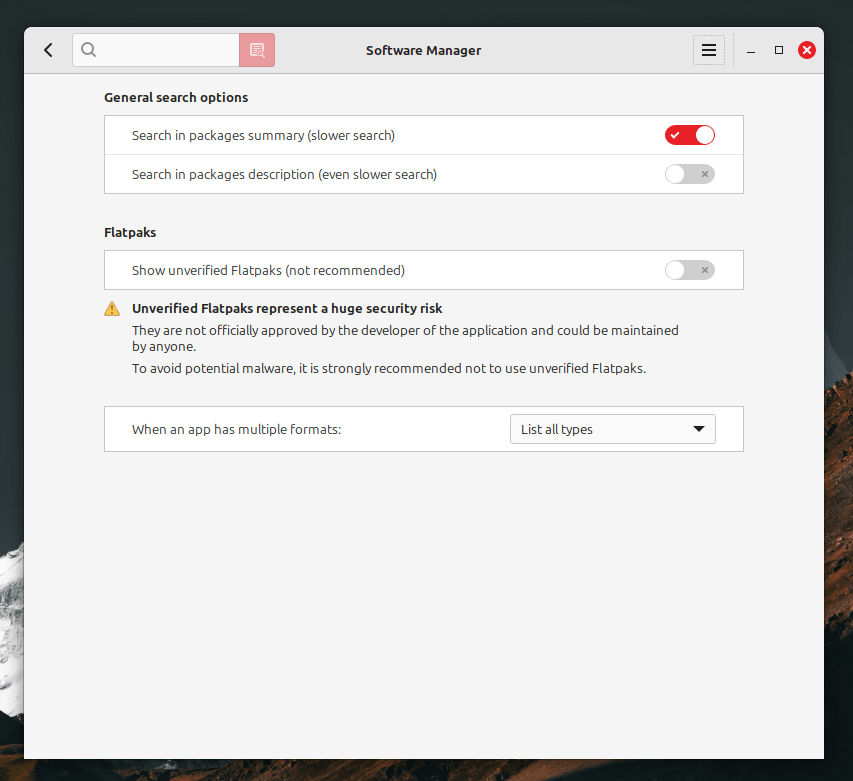
This is a good change that adds additional security and comfort of mind to users. In this way, all software available for installation in the software center are either provided by the distribution maintainers or the app maintainers themselves, with no other parties involved.
The software center will let you know when the software you want to install is available both as a traditional DEB package and also as a Flatpak, and let you decide between them.
This is how Krita’s package looks like both as a DEB package and a Flatpak package:
Of course, if the user is presented with the choice, then he/she will most probably pick the DEB version simply because it takes much less time to download and much less disk space.
New users may not understand that Flatpak requires “runtimes” for the first time before the download and installation size for new applications goes down. This simple point of failure in user experience may alone limit Flatpak’s adoption with many users.
But at least, Linux Mint 22 gives you the choice to do what you want.
Upon opening the update manager, the program will let you know if you can switch to a local software mirror for faster download speeds, which is a good user experience:
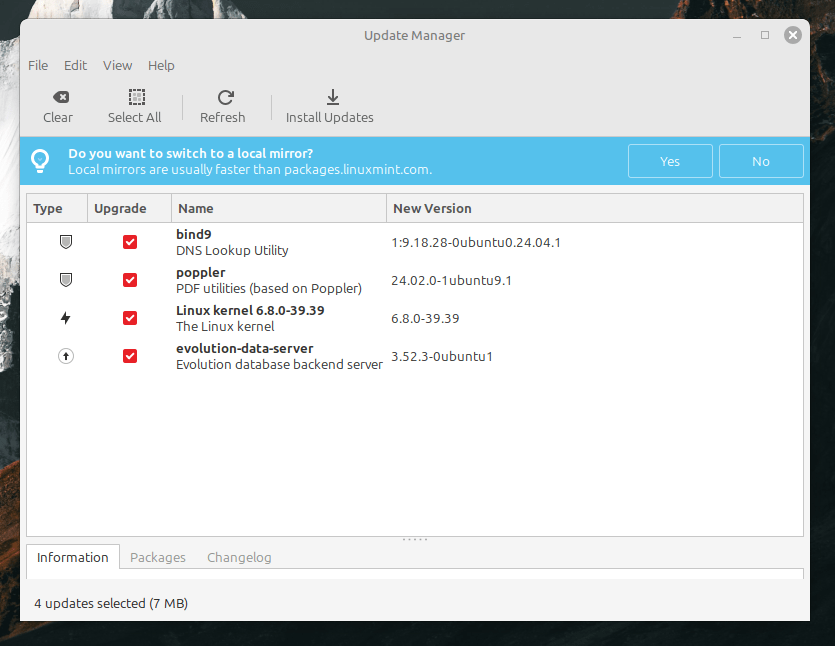
Suppose you are geographically located far from where the physical download server is located. In that case, you may be getting reduced download speeds and not fully utilizing the bandwidth of your Internet connection.
To overcome that, software developers offering a large software catalog (like the full software repositories for a Linux distribution such as Linux Mint) often create what’s known as “mirrors” around the world where local users in that country or area can download the same set of software much faster.
Mirrors are simply software download channels that offer the exact same software from a server that’s located in a different geographical location.
Software packages are of course digitally signed by the Linux Mint team and hence, any attempt to alter the packages for users downloading these packages will cause them to be rejected from the user system and won’t be installed.
In this way, even if you switch to using a local mirror, then no harm can come to your system.
And Linux Mint 22 supports that.
Web Platforms
Linux Mint now comes with a standalone window that points to their Matrix server where users can get help and support. Matrix is a decentralized open-source communication protocol that can be used as an alternative to traditional IRC channels and other social media content:

This is done using the Linux Mint Web App Manager, which allows converting any website into a standalone app that can be launched separately from the web browser:
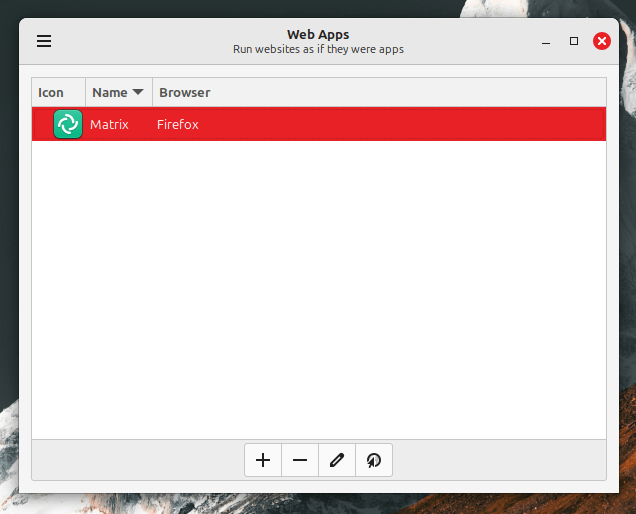
Under the hood, of course, these web apps are nothing more than Firefox-based windows running independently from each other.
You can use the web app manager to create a custom window for Web.whatsapp.com for example:
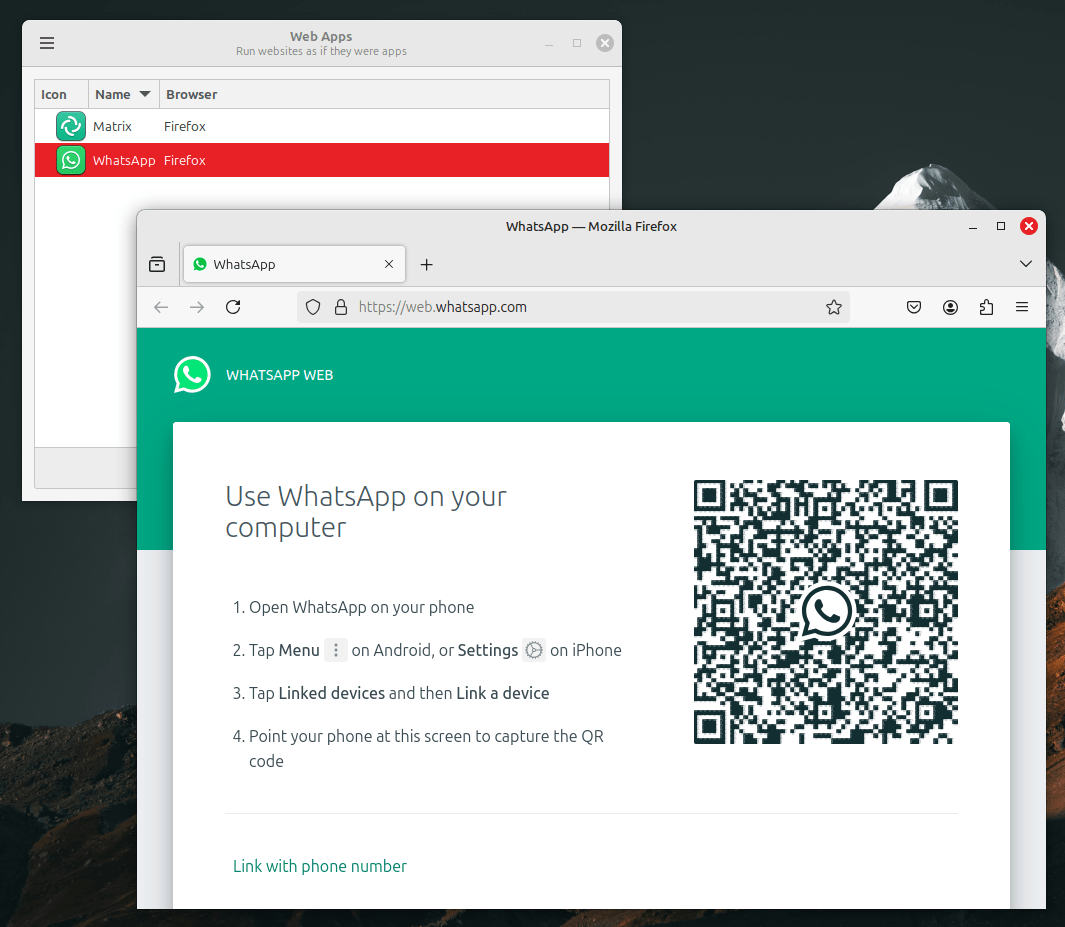
The Linux Mint team has ported “GNOME Online Accounts” from the GNOME desktop to their own supported desktops which are MATE, Xfce and Cinnamon. Users can now integrate notifications and other features for these accounts on any of these desktops:
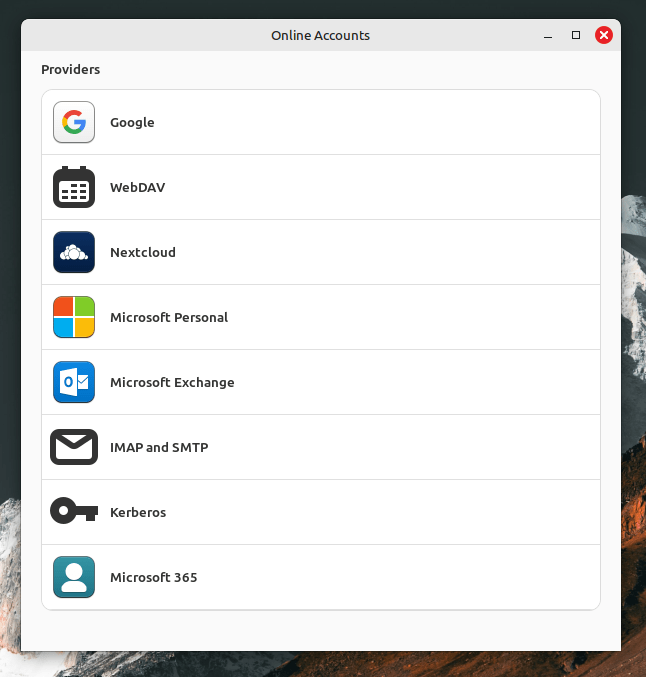
However, based on our experience, there seems to be a bug affecting the online accounts window. When you try to add an account and click on the “Sign in” button, nothing happens and the window just stays there:
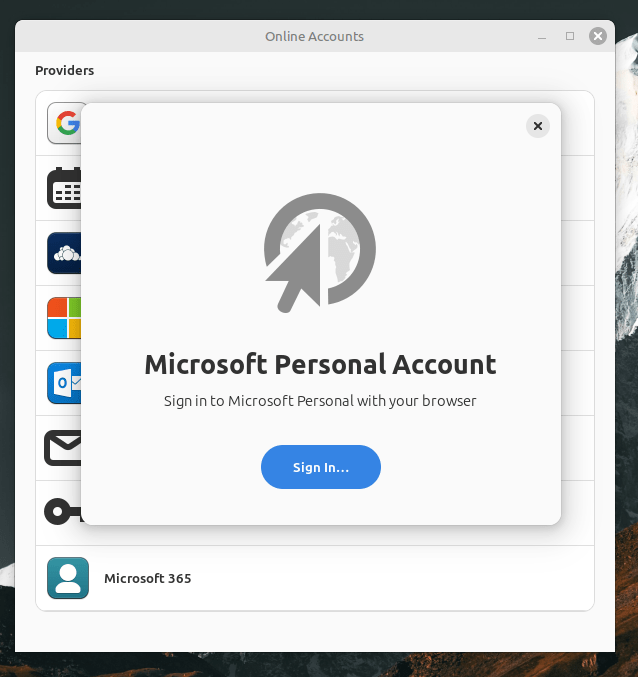
Terminal output indeed suggests there is a problem with the software:
mhsabbagh@fosspost:~$ gnome-online-accounts-gtk
GoaBackend-Message: 07:58:15.389: oauth2_secret_run_task: goa-oauth2://localhost/8ef61e06-XXXXX-49af-9b63-6983aedeXXXX - 8ef61e06-XXXX-49af-9b63-6983aedeXXXX
** (gnome-online-accounts-gtk:14660): WARNING **: 07:58:15.424: Problem adding an account: No such secret collection at path: /org/freedesktop/secrets/collection/login
(gnome-online-accounts-gtk:14660): GLib-GIO-CRITICAL **: 07:58:15.425: g_task_return_boolean: assertion '!task->ever_returned' failed
^C
Let’s hope the LM team gets that fixed in an update shortly.
Appearance
Linux Mint 22 ships with a new default mouse cursor across its desktops:

And also comes with updated icons for files and folders:
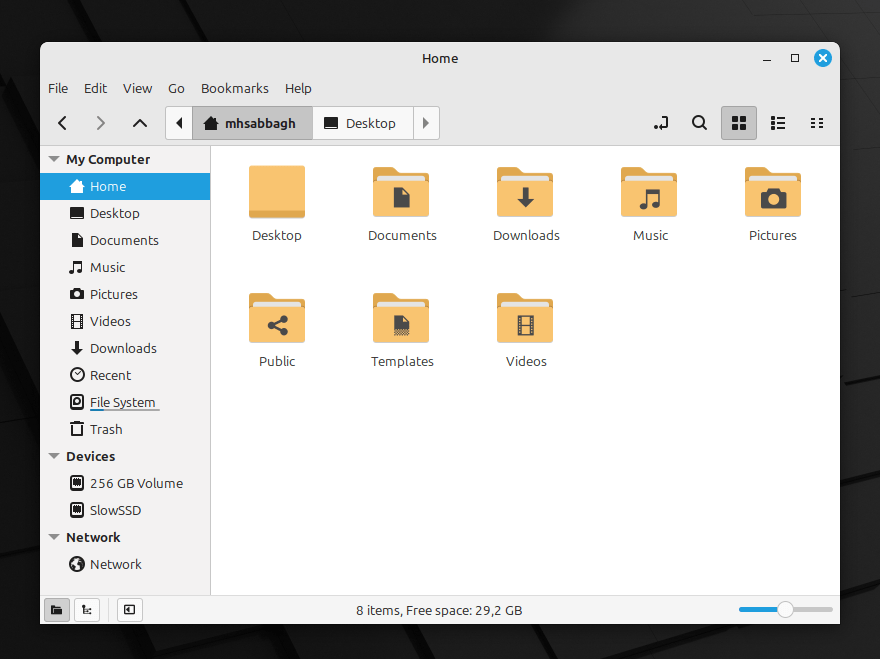
All themes made by the Linux Mint team have been updated to support GTK 4 applications, which means such applications will now look more integrated with the overall system appearance (as long as they don’t use libadwaita).
The system look and feel settings were updated to allow changing the color accent in a single click:

What this does under the hood is that the icon and GTK themes are changed accordingly:
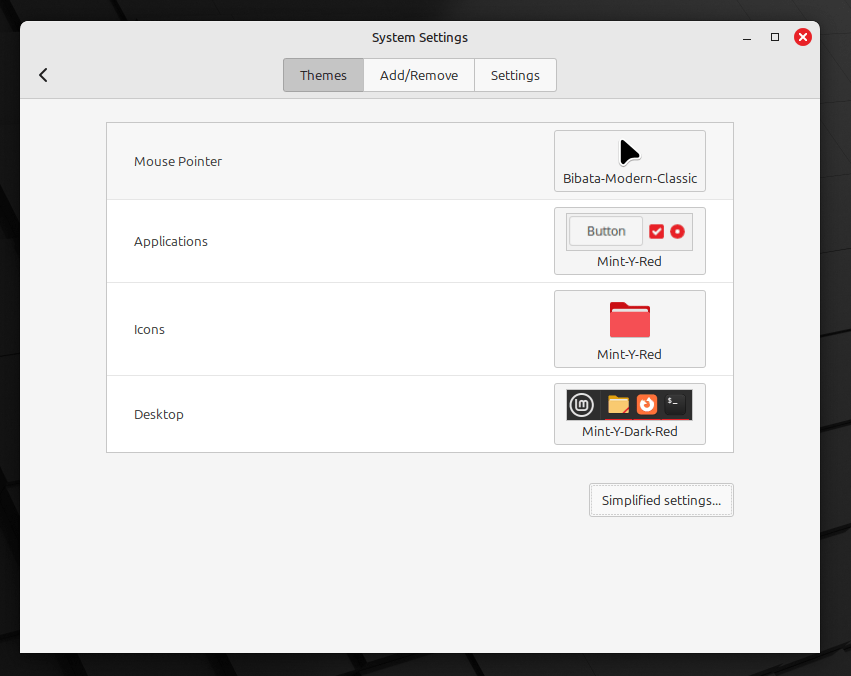
Additionally, the user can define whether he/she wants applications to use light or dark themes:

A set of nice new wallpapers ship with Linux Mint 22 as well:
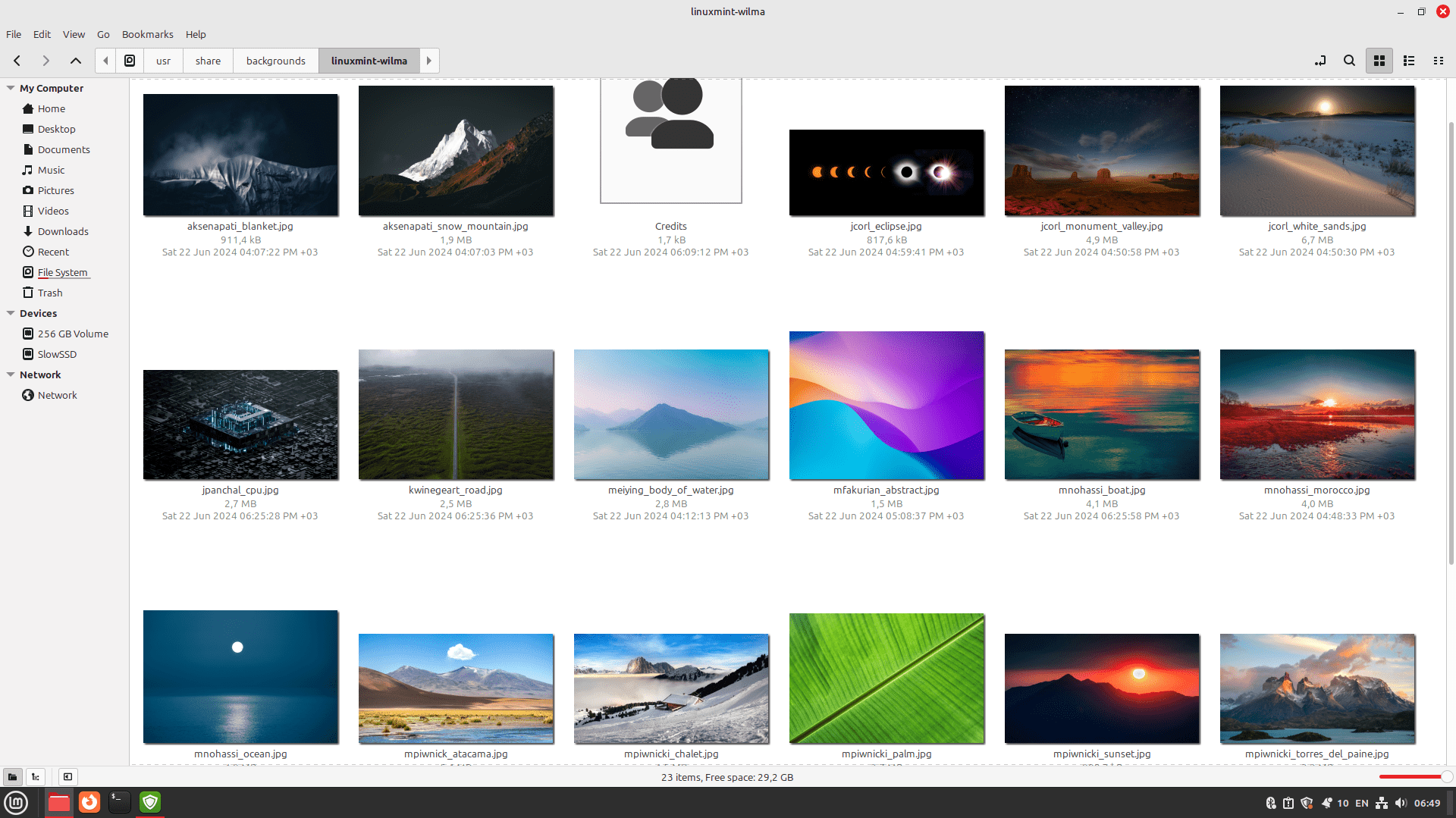
Experimental Wayland Support
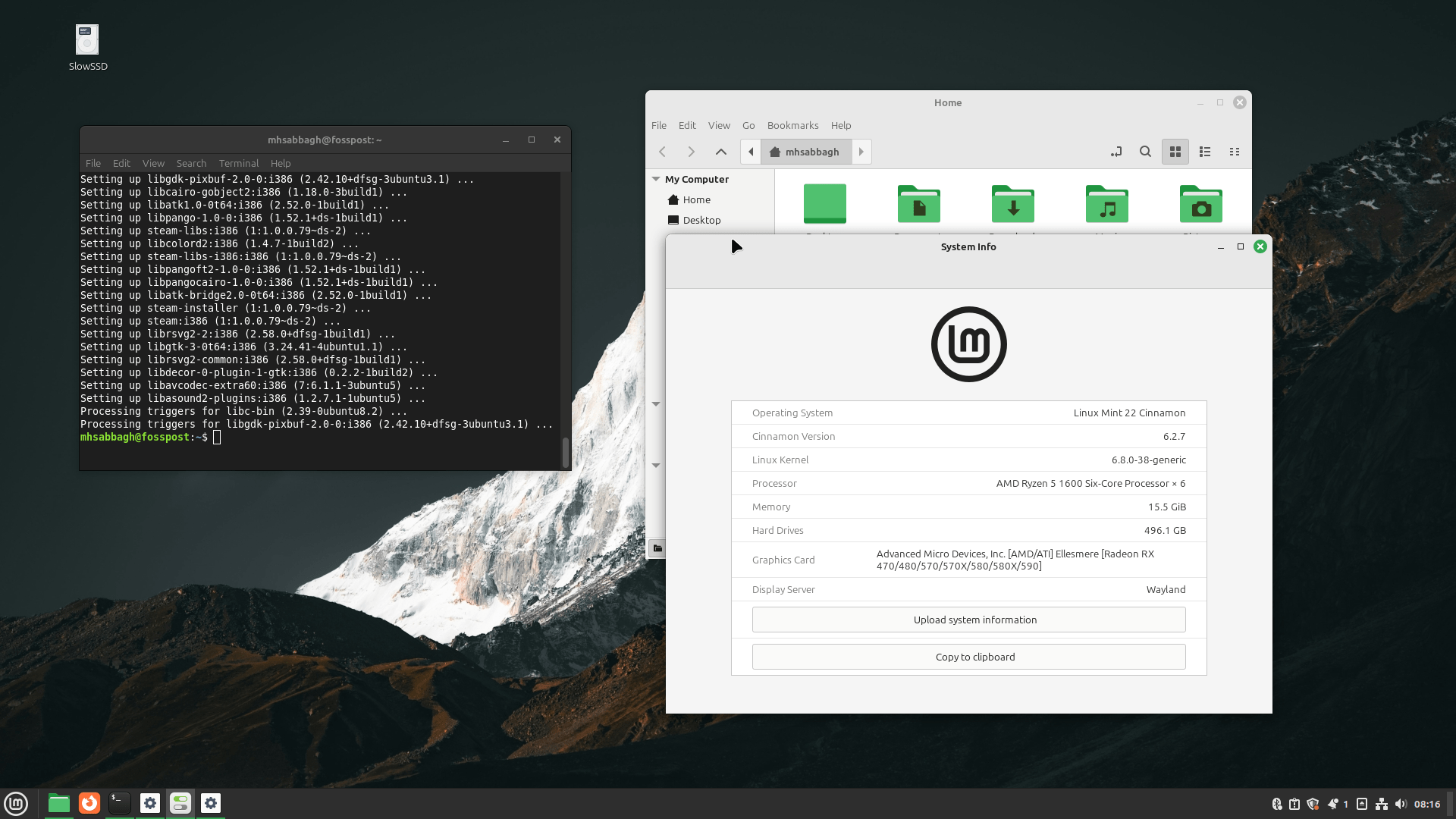
Experimental Wayland support has landed in the Cinnamon desktop in Linux Mint 22. You can choose the Wayland session from the login window to activate the new experience.
The first thing that catches the eye is that the desktop icons are apparently provided to the desktop using a standalone window. You can click this window or minimize it and desktop icons will go along with it, very funny to see:
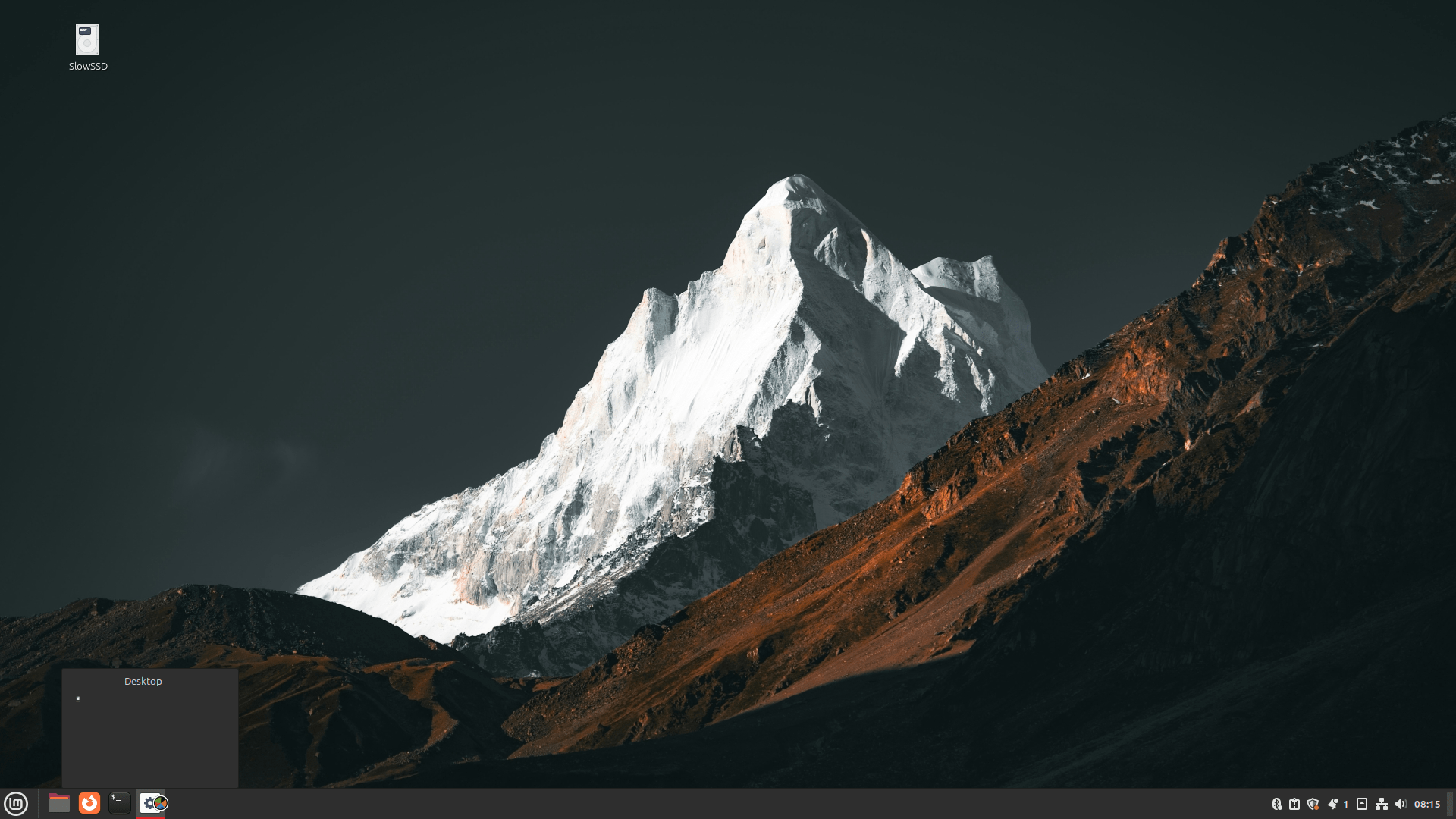
Upon login, launching apps takes a long time sometimes. Some apps like “Disk Image Analyzer” will take a full minute to launch under Wayland, while others like Firefox may take 10 to 30 seconds. Flatpak-based applications also take a long time.
It is not clear exactly why apps behave this way under Cinnamon’s Wayland session.
Also, if you try to enable fractional scaling from Cinnamon with Wayland (which is also experimental and not complete) then sadly you will not end up with a happy result.
From our testing, the desktop freezes for a bit and windows are displayed for you without them actually being there in the eye of the system. That is, when you click them, you appear as if you are clicking on the empty desktop behind although you can clearly see them with your own eyes.
The only trick that works for fractional scaling is using a custom font DPI to enlarge the container window for texts according to the text size. This trick has been known for many years across GTK-based desktops which sadly still have no full native fractional scaling support:
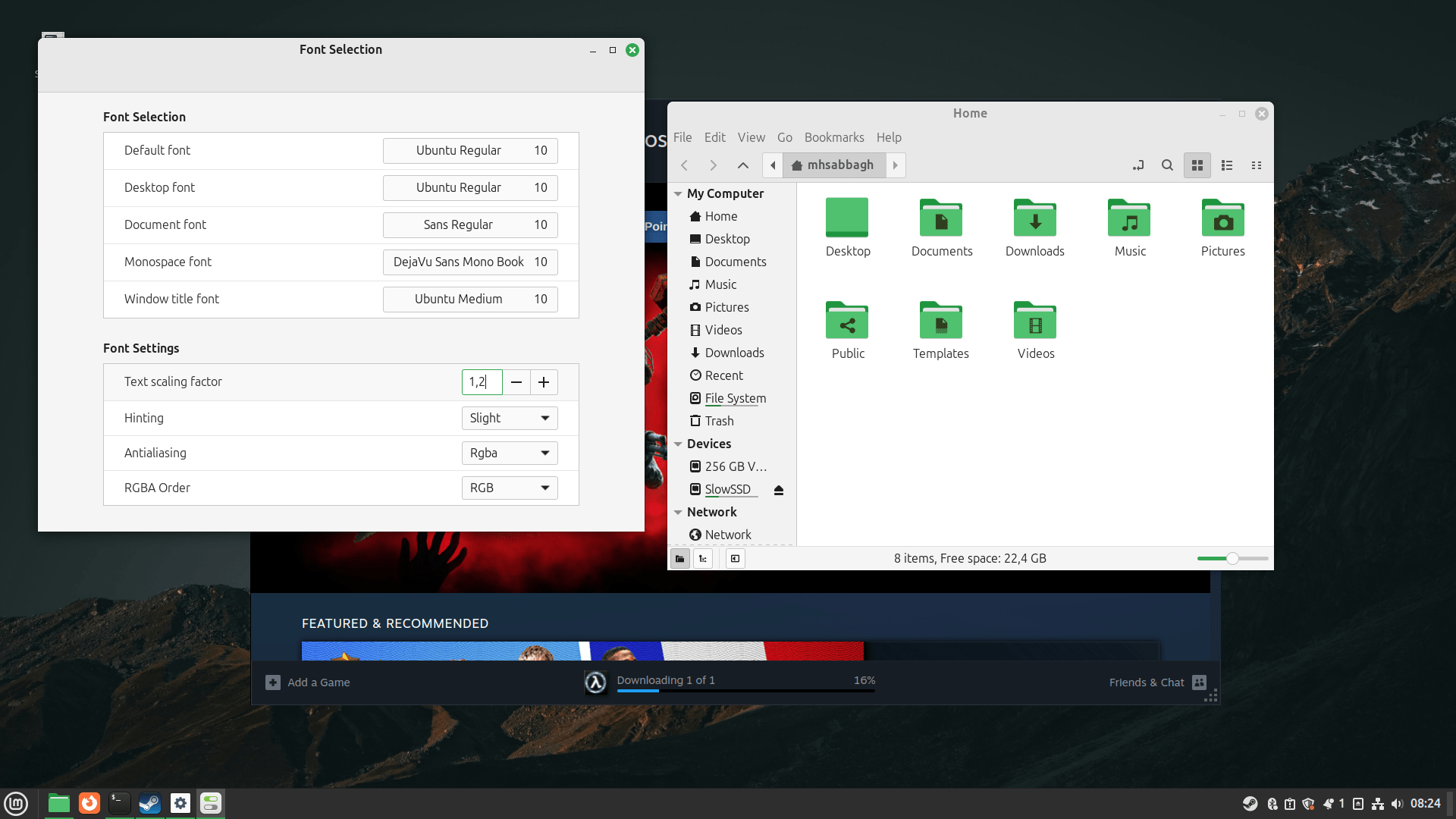
We can conclude that Wayland’s support in Linux Mint and Cinnamon is still in the very early stages.
Other Things
Linux Mint 22 Cinnamon uses 1.2 GB of RAM after a fresh boot:
mhsabbagh@fosspost:~$ free -m
total used free shared buff/cache available
Mem: 15896 1213 14418 11 540 14683
Swap: 0 0 0
And reaches the login window in around 13 seconds:
mhsabbagh@fosspost:~$ systemd-analyze
Startup finished in 3.237s (kernel) + 13.628s (userspace) = 16.866s
graphical.target reached after 13.600s in userspace.
This review was done on the following hardware:
- AMD Ryzen 1600 CPU, 6-cores and 12-threads.
- AMD RX580 GPU, 4GB of VRAM.
- 16 GB of RAM.
- 256 GB SATA SSD disk.
Conclusion
Linux Mint 22 ships with many interesting features and updates, and the experience that it builds on top of Ubuntu 24.04 makes it one of the best choices for users switching from Windows 11 or macOS to Linux.
The distribution is suitable for old computers and new ones alike. Users can choose between the Xfce, MATE and Cinnamon editions according to their hardware specs.
The experimental Wayland support is a step forward towards a modern Linux desktop that overcomes the shortages and flaws of the old X window system. It is still not finished yet, but shipping it with the distribution will encourage users to try it and give feedback, which in turn will fasten its maturity towards a full experience.
Linux Mint’s cautious approach towards unverified Flatpaks shows how well they care for users’ security and privacy. Linux Mint could be one of the very few distributions to disable these Flatpaks, considering that they form a significant number of overall Flatpaks.
In the end, no distribution is perfect and there might be some bugs or issues in Linux Mint as we have seen. Still, it is as much as good as a daily driver Linux distribution can get to be, and we recommend our readers try it out and use it.
Linux Mint 22
-
Available software
-
Creativity & Inventing
-
Daily Use Purposes
-
Stability & Bugs
-
Customizability
Summary
Linux Mint 22 comes with many updated software and a few additional features. It will be supported with updates until 2029. The distribution also comes with experimental Wayland support for the Cinnamon session which has not yet matured enough, but the Xorg-based session is already more than enough. With updated eyecandy, more secure software management and an overall improvement of system core, the Linux Mint 22 is a considerable upgrade from older versions and a definite one from Windows 11 or macOS.
Pros
– Updated software and kernel.
– More secure software management.
– Better eyecandy and customization support.
– GTK4 port for themes.
– Matrix support via Element.
– Good hardware support including NVIDIA GPUs and other modern pieces.
– Experimental Wayland support.
Cons
– Buggy “Online Accounts” feature.
– Wayland session is not ready yet for daily use.
With a B.Sc and M.Sc in Computer Science & Engineering, Hanny brings more than a decade of experience with Linux and open-source software. He has developed Linux distributions, desktop programs, web applications and much more. All of which attracted tens of thousands of users over many years. He additionally maintains other open-source related platforms to promote it in his local communities.
Hanny is the founder of FOSS Post.

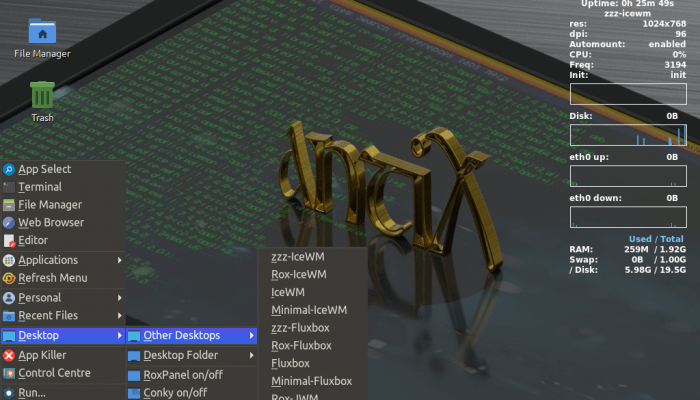

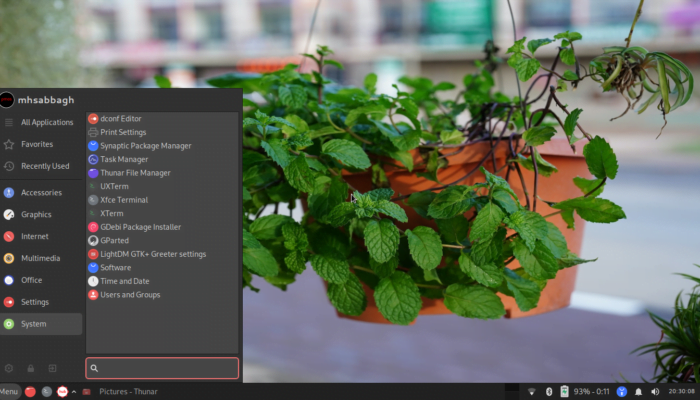





Wanna leave a comment on this story? Check it out on our Outpost forum and participate in the conversation.
Leave a Comment